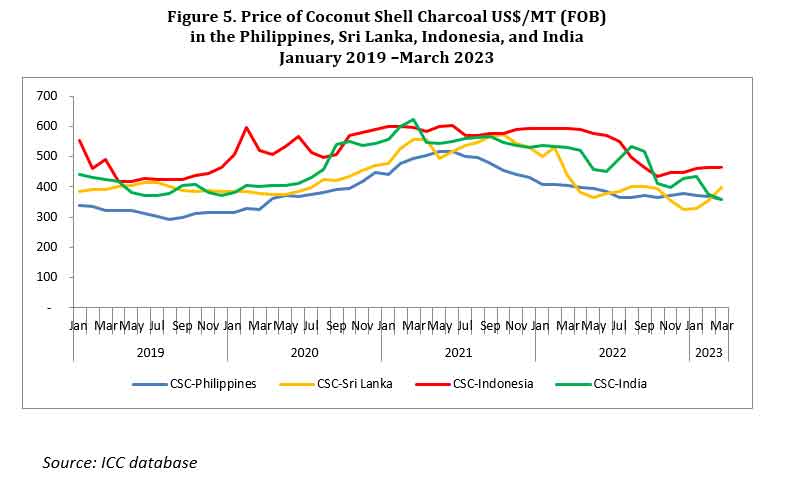- Home
- Statistics
- Market Review
Market Review of Coconut Shell Charcoal
April 2023
Activated carbon, also known as activated charcoal, is a highly porous material that is used to absorb impurities and contaminants. It is widely used in various industries, such as water treatment, air purification, food and beverage processing, and other industrial applications. Despite the economic uncertainties, the global trade of activated carbon has shown positive performance in 2022.
The global market for activated carbon is expected to grow at a CAGR of 8.5% from 2021 to 2028, reaching USD 8.12 billion by 2028. India, one of the major producing countries of activated carbon, has shown a 17.6% increase in exports in the January-December 2022 period, reaching a volume of 154,423.88 tons, with a value of US$311.80 million. The United States remains the primary importer of Indian activated carbon, with other significant importers being Sri Lanka, Germany, Turkey, South Korea, Italy, and the Netherlands.
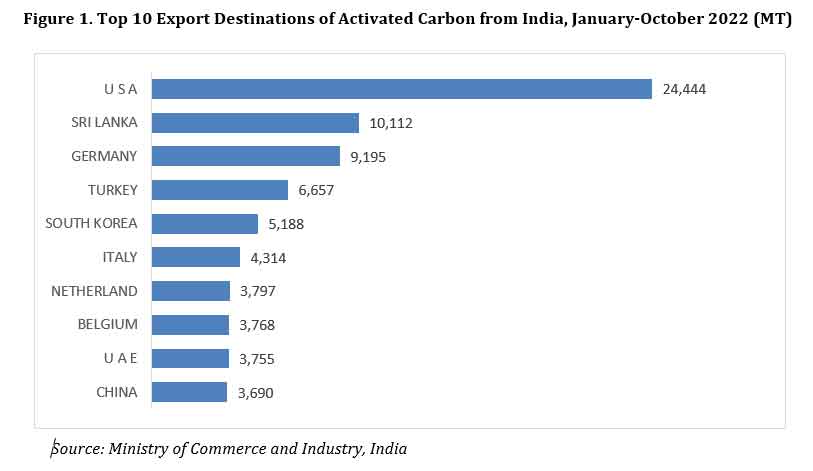
Sri Lanka, another major producer of activated carbon, has also shown positive growth, with a 4% increase in volume and a 9% increase in earnings from activated carbon exports in the January-December 2022 period compared to the previous year. The United States, China, Germany, the United Kingdom, and Japan were among the primary importers of Sri Lankan activated carbon.
The Philippines has seen a significant increase of 22% in activated carbon exports, shipping 90,092 tons in the January-December 2022 period, up from 73,840 tons the previous year. Japan, Germany, the United States, China, and South Korea were among the primary importers of activated carbon from the Philippines. This growth in exports can be attributed to an increase in demand for activated carbon in the water treatment and air purification industries, as well as in the production of face masks in response to the COVID-19 pandemic.
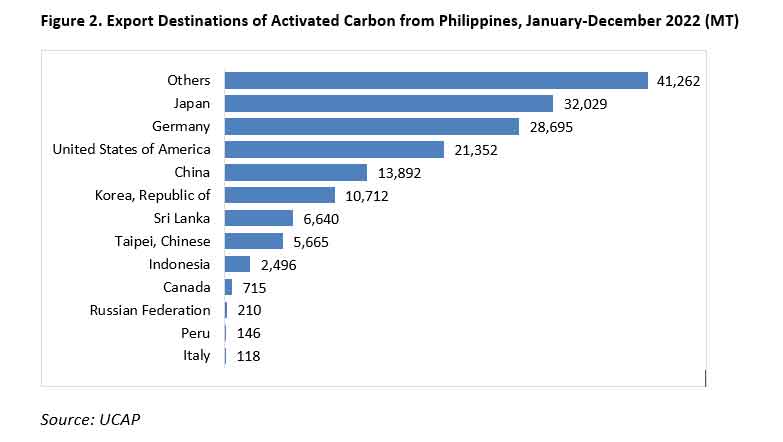
Finally, Indonesia, another significant producer of activated carbon, has shown a sign of recovery in the January-December 2022 period, with an 8% increase in activated carbon exports compared to the previous year. The country exported 25,832 tons of activated carbon in the period, generating export earnings of US$42.6 million.
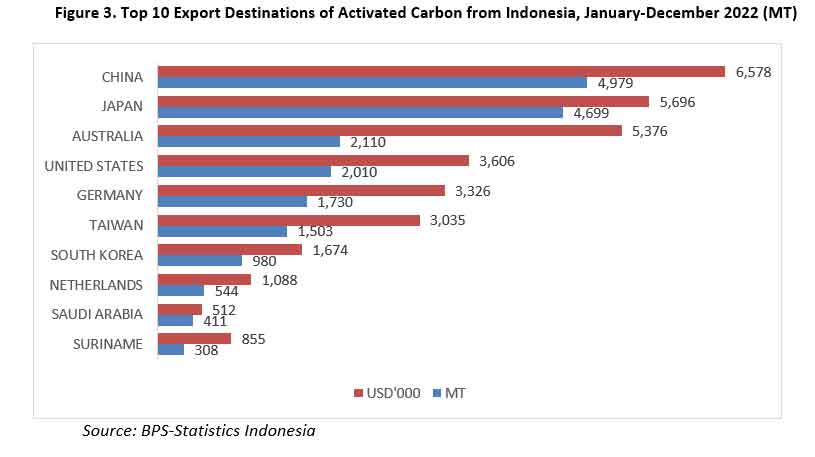
On the demand side, The United States is the largest importer of coconut shell-based activated carbon, with a volume of 66,470 tons in 2022, representing a 45% increase from the previous year. The demand for activated carbon in the US is driven by strict environmental regulations and an upswing in industrial activities requiring purification and filtration.
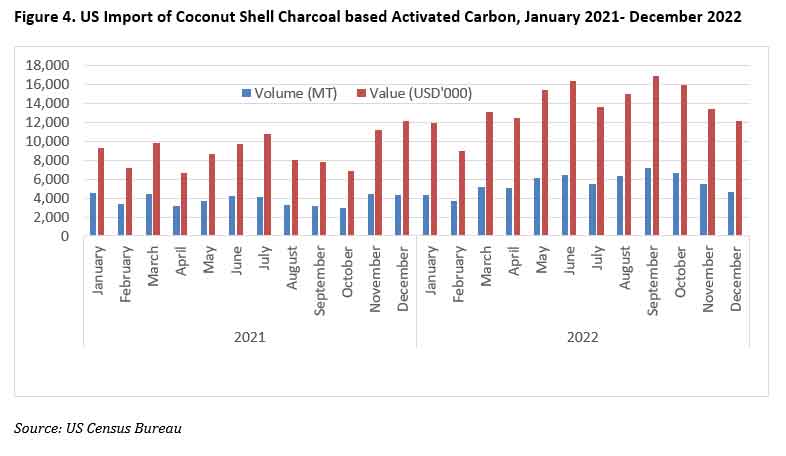
Japan is another significant importer of activated carbon, with an import volume of 86,191 tons in 2022, valued at US$168.17 million. This volume represents a 2% increase compared to the same period in the previous year. The demand for activated carbon in Japan is driven by similar factors as in the US, such as increased usage in water treatment and air purification, and expansion of the food and beverage processing industry. Amid the increasing demand of the carbon, price of coconut shell charcoal as raw material for the carbon showed varying trends across different producing countries. In the first quarter of 2023, in the Philippines and India, the price demonstrated a downward trend, while in Sri Lanka, it increased, and in Indonesia, it remained relatively stable. The price of charcoal ranged from US$357/MT to US$463/MT in March 2023, indicating a diverse market for the commodity.
On the other hand, the export price of activated carbon demonstrated fluctuating trends during CY 2022. In Indonesia, the price was US$1,801/MT in January 2022, which decreased to US$1,545/MT in December 2022, with an average price of US$1,651/MY. Meanwhile, the price of the carbon in Sri Lanka was US$2,834/MT in January 2022 and slightly declined to US$2,821/MT in March 2022, reflecting a relatively stable market. The fluctuation in price could be attributed to various factors, such as changes in demand and supply, production costs, and global economic conditions.
It is worth noting that the prices of raw materials, such as coconut shell charcoal, significantly impact the cost of producing activated carbon. Therefore, changes in the prices of these raw materials can affect the overall market trend for activated carbon. As the demand for activated carbon continues to increase across various industries, the prices of both raw materials and the final product are likely to remain volatile in the foreseeable future.
